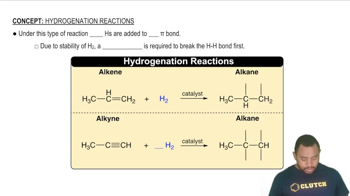Here are the essential concepts you must grasp in order to answer the question correctly.
Intermolecular Forces
Intermolecular forces are the attractive forces between molecules that influence physical properties like boiling points. The main types include hydrogen bonding, dipole-dipole interactions, and London dispersion forces. Compounds with stronger intermolecular forces typically have higher boiling points because more energy is required to separate the molecules.
Recommended video:
Intermolecular vs Intramolecular Forces
Hydrogen Bonding
Hydrogen bonding is a specific type of strong dipole-dipole interaction that occurs when hydrogen is bonded to highly electronegative atoms like oxygen, nitrogen, or fluorine. In the given compounds, CH3OH (methanol) can form hydrogen bonds due to the presence of an -OH group, significantly increasing its boiling point compared to compounds that cannot form such bonds.
Recommended video:
Molecular Structure and Polarity
The molecular structure and polarity of a compound affect its boiling point. Polar molecules, which have an uneven distribution of charge, tend to have higher boiling points than nonpolar molecules due to stronger intermolecular attractions. In this case, CH3OCH3 (dimethyl ether) is less polar than CH3OH (methanol), leading to a lower boiling point for the former.
Recommended video:
 Verified step by step guidance
Verified step by step guidance


